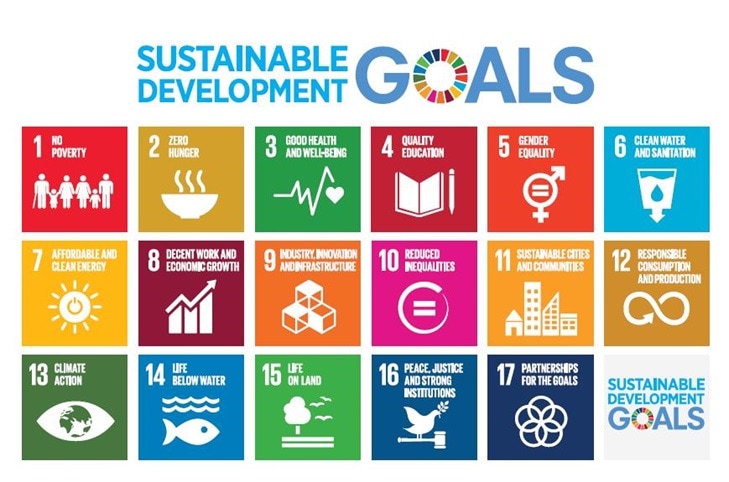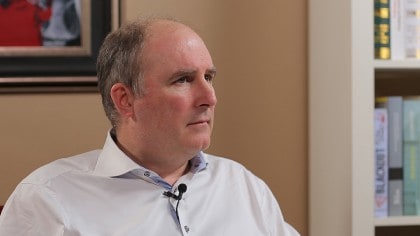Say yes to sustainability: The planet and your bottom line will thank you
Environmental and business expert Jim Harris from Strategic Advantage explains why sustainability and digital transformation are not just one and the same, but also highly profitable.


By Gary Maidment
Environmental and business expert Jim Harris from Strategic Advantage explains why sustainability and digital transformation are not just one and the same, but also highly profitable.
When it comes to a future that’s as clean and green as it is technologically advanced, business and environmental expert Jim Harris believes that, “Sustainability and digital transformation are one and the same.” But as enterprises embark on ambitious digitization journeys, where does sustainability fit into the business strategy equation?
Slow to change
According to Harris, we’ve still got a long way to go, “There are literally thousands of solutions that are very, very profitable that we’re not engaged in.” Given that sustainability profits the planet as well as the corporate bottom line, why isn’t everyone jumping aboard the sustainability train? After all, it’s not hard to buy into the business case that using less energy, minimizing waste, and implementing other lean and green measures will inject fiscal health into a company’s spreadsheets at financial year-end, especially when such measures tend to tie into digital transformation.
Harris believes that companies can be sluggish to go digital because of a “commitment to existing processes.” However, he cites the insurance industry as an example of how change can take off with the right trigger, “Just ten years ago, it took about eight weeks on average from when you had a car accident until you got your check in the mail. It was a hugely intensive paper-bound process.” Then, one North American insurer broke the mold by paying 50 percent of claims in eight hours, a 99 percent reduction in processing time. Today, the purely digital insurer Lemonaid has taken the game to a whole new level. “It issues policies in 90 seconds,” says Harris “And they have the fastest claim payments in the world – three seconds.”
Although first movers in a vertical can raise the bar to the extent that forces others to adapt or fold, digital transformation and sustainability must flow down and through an organization from the top floor. However, C-suite inertia can be a limiting factor, in part because the knee-jerk reaction is that the initial outlay in sustainable solutions will drop a company in the red. Not so, says Harris.
It’s payback time
Although ROI varies from scheme to scheme, it tends to be much quicker and robust than businesses think, “There are so many initiatives that have a payback period of less than four years.” Harris uses the example of a major US retailer to illustrate this point, “They only make 3 percent net profit. They need to sell a dollar of goods to make 3 cents, while their sustainability initiatives have an ROI of 25 percent.” The retailer runs a repurpose, recycle, and reuse strategy that includes reusing organic material like cooking oil and sets a zero-waste-to-landfill target. Currently, the company diverts 81 percent of its waste away from landfill sites. “In fact, they’re making more money through sustainability and investing in sustainability than they are by their razor thin margins,” says Harris.
He’s also passionate about how a digital and sustainable approach to buildings can tip the tide firmly in favor of lower energy use, efficiency, and huge cost savings, “In Toronto, [developers] built a new commercial building and saved 1 million dollars on construction costs by making everything IP-based,” he says. “Normally in the core of a building, you have 35 networks running up. You have telephony. You have Internet. You have fire. You have security…In this particular building…they just ran one fiber cable up.” Harris mentions that the solution also benefits the building’s tenants; for example, the consulting firm PwC saved a staggering US$235,000 because it could use VoIP phones to raise and lower its blinds instead of having to install a separate network.
Harris points out that we tend to think that sustainable initiatives are much more complex than they really are, and that astonishingly simple ideas can make a huge difference. He says that most buildings’ roofs, for example, are a heat-absorbing black even though they’re home to air conditioning systems, “So, on a hot summer’s day, they’re drawing in air that’s much hotter than it needs to be,” states Harris. “Globally, if every roof were a white roof, it would save 2 trillion dollars of carbon emissions for free.” To get some idea of what this figure actually means in context, the total liquidated wealth in the world is an estimated US$241 trillion. In environmental terms, it’s the equivalent to removing 600 million vehicles from the planet for 18 years. Equally important, he mentions that 27 percent of the electricity used in the US goes on lighting, “The shift from incandescent bulbs, which is a 100-year-old technology, to LED lights can reduce that usage by 80 percent.”
Harris also provides some sobering statistics on the power used by the world’s 4 billion electronic devices in standby mode, “[They] consume 480 terawatt-hours a year. That’s equal to all the power that all the nuclear plants in France, which is 80 percent nuclear, China, and India produce collectively.” Harris believes that policy makers need to legislate against this waste by requiring manufacturers to make their products draw only 0.1 Watt in standby mode. Doing so would benefit everyone, “Manufacturers have found when the standards are imposed on them, it’s actually cheaper to make more efficient power supplies because there isn’t as much material, metal, or copper inside them.”
Driving change
In the telecoms world, Harris notes that the majority of carriers are slow to change as “they’ve done things the same way for many years. They have this legacy approach both to equipment and to the way they work internally.” He believes that a company like Huawei can make a difference, “Huawei is involved with over 100 different carriers around the world in many different countries, it can bring value to its partners and help them transform into a digital future.”
Huawei promotes a circular economy that reuses components, raw materials, and products. It selects recyclable or compostable materials, and designs products with maximizing lifespan in mind. On the B2B front, Huawei provides customers with green solutions that minimize energy use and thus OPEX. Examples include its green data centers and the Huawei Hybrid Solar Power Solution, which increases power supply by 20 percent, minimizes carbon emissions, and tops the industry with a conversion efficiency of 98.5 percent.
In the B2C space, it’s putting its green solutions into the pockets of consumers in the shape of its mobile phones, which comply with the ULL110 standards that assess the sustainability of handsets.
During the product design stage, Huawei builds in easy take-back, maintenance, recycling, and reuse, an approach that gels with Harris’ opinions on the rising problem of e-waste, “The best way to nip it in the bud is to have cradle-to-cradle responsibility,” he asserts. “Whoever manufactured the device must take it back at the end of life. That creates a responsibility for the manufacturer to create a manufacturing process with the end in mind.”
We’re all in this together
Sustainability isn’t just about saving energy and green solutions – it also includes the long-term prosperity and welfare of society. At the 47th annual meeting of the World Economic Forum, Huawei signed The Compact for Responsive and Responsible Leadership, pledging to align its corporate goals with those of society under the umbrella of sustainable growth and investment.
Huawei believes that ICT is critical to achieving the UN’s Sustainable Development Goals at the scale and speed necessary to fulfill the 2030 Agenda for Sustainable Development. Framed within this commitment is the mission to help bridge the digital divide with projects such as Huawei’s award-winning Smart Healthcare initiative in Kenya, which benefits 200,000 people in remote areas with telemedicine solutions, and its Seeds for the Future program, which partners with 300 universities in 96 countries to cultivate ICT talent. According to Huawei Chairwoman Sun Yafang, “Our ultimate goal is to enable full connectivity between people and people, people and things, and between things and things, and in doing so create a more sustainable, better connected future.”
The UN’s 17 Sustainable Development Goals

For a truly sustainable, digitally powered future, the concerted effort of society is required, and in this regard Huawei aims to serve as a driver and enabler. But the journey has just begun. As Harris puts it, “We’re just scratching the surface of what’s possible in terms of energy efficiency, fuel efficiency, and sustainability.”
Huawei phones facts and figures





